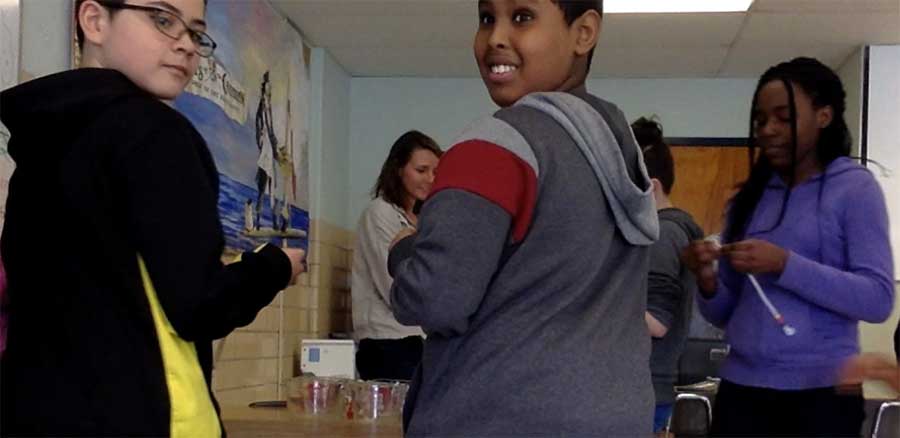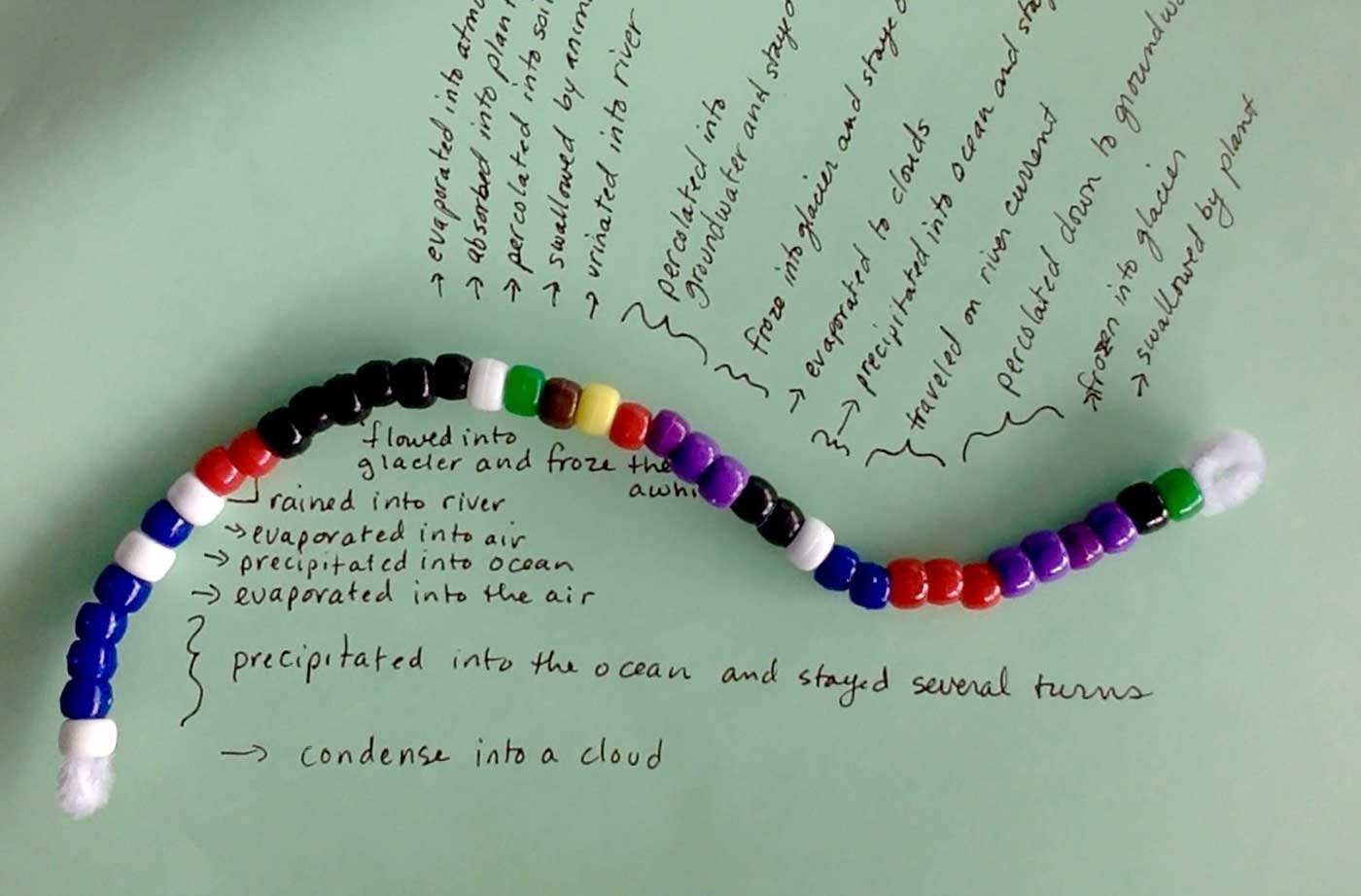On May 2, 2019, we did a My Water Journey activity. The point of this activity was so we could understand the way the water moves through the hydrosphere. We wanted to do this project because it would give us a further understanding the project we have been working on for many months with the support from the Natural Resource Council of Maine.

There were nine stations, each with a destination that the Water Cycle could take a water droplet. Each color coded station included a giant dice cube and a bucket of colored beads.
We each received a pipe cleaner and went to a station. The procedure at each station was to grab a bead, put it on your pipe cleaner, roll the die, and move on to the next stop on your unique water journey.
Each station had a different colored bead. Ocean was blue, river was red, a cloud was white, glacier was black, soil was brown, groundwater was purple, animal was yellow, lake was orange, and green was plants.
On the dice, the places listed were realistic to the real world Water Cycle. There were even times when we stayed in a location for a few turns. This meant that it was probably a place where the Water Cycle doesn’t progress as fast.
The places you were most likely to roll a stay were glacier and ocean. Glacier because they take millions and millions of years to melt, and ocean because they’re so big.
Once we filled our pipe cleaners to the top with beads we recorded our water journey in our science journals. Writing down the color of beads we got and the order of when we got them. We also tried to use our hydrosphere vocabulary to generate verbs for each part of the cycle.
Here is an example:
Red – river (runoff)
Orange – lake (current)
White – cloud (evaporate)
Blue – ocean (precipitate)
Blue – (stayed) in the ocean

When we compared journeys with the rest of the class it quickly became clear that very few water drops move in a simple circular path through evaporation, precipitation, and condensation. The hydrosphere is full of variety!
—Ruth MacLean, Teacher, King Middle School, Portland, Maine











Is an explanation of the full set up available? Such as:
station names/locations
does a station have one color of bead?
do you need a specific die to roll?
directions for the student?
directions for the instructor?
Thank you, This looks like a lot of fun.